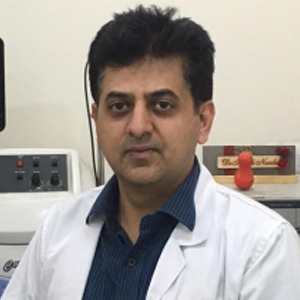
Allergic rhinitis Causes of AR
An allergy is sensitivity to a substance called an allergen. Nasal allergies are most commonly caused by one or more of four kinds of allergens: pollen, house-dust mites, mold, and animals. Because pollen is a problem only during certain times of the year, it usually causes seasonal nasal allergies. House-dust mites mold, and animals may be around all year long, and so usually cause perennial nasal allergies. Other substances, called irritants, can bother the nose and make allergy symptoms worse.AR has to be differentiated from chronic rhino sinusitis, allergic fungal sinusitis and allergic polyposis.
Allergic asthma Causes of Allergic Asthma
Allergic Asthma often shares the same allergic triggers as allergic rhinitis. It is important to consider allergy and asthma as the manifestations of a hypersensitive Immune reaction.The same allergens that give some people sneezing fits and watery eyes can cause an asthma attack in others. Allergic asthma is the most common type of asthma. About 90% of kids with childhood asthma have allergies, compared with about 50% of adults with asthma. The symptoms of allergic asthma get triggered after you breathe things called allergens like pollen, dust mites, or mold. If you have asthma (allergic or non-allergic), it gets worse after you exercise in cold air or after breathing smoke, dust, or fumes. Allergens are everywhere, so it’s important that people with allergic asthma know their triggers and learn how to prevent an attack.
Management of Allergic Rhinitis/ Allergic asthma
Appropriate medication, allergy tests and avoidance measures Immunotherapy in refractory cases. In all AR and allergic asthma cases the chest, ears, tonsils and adenoids are evaluated.
Tonsillitis and Adenoiditis
The commonest pediatric ailments are recurrent URTI, sore throat and ear infection. If your Child is snoring at night or having repeated cough and cold, drooling while asleep or is a mouth breather , he could be suffering from Adenoid Infection
Adenoids are a mass of lymphoid tissue, located in the passage that connects the back of the nasal cavity to the throat. Adenoids are also called nasopharyngeal tonsils, filter out bacteria and viruses entering through the nose and produce antibodies to help the body fight infections. Adenoids usually shrink after about 5 years of age, and they often practically disappear by the teenage years. They become unusually enlarged due to recurrent allergies or infections and then create symptoms. Usually the swelling is temporary, but sometimes recurrent problems may cause the swelling to be persistent and excessive.
Symptoms of Adenoid infection
- Difficulty of breathing through the nose
- Breathing through the mouth
- Talking as if his or her nostrils are closed
- Breathes noisily
- Snoring while sleeping
- Sleep Apnea-Stops breathing for a few seconds while sleeping
- Hearing Aid Fitting – Fitting and Programming of high tech digital hearing aids is another facility that we have at the Audiometry and Hearing aid clinic at Kataria Eye & ENT Hospital. Very sophisticated modern digital hearing aids are dispensed here after thorough audiometric assessment.
Does your child have frequent attacks of sore throat, cough, cold and fever?
The commonest pediatric ailments are recurrent URTI, sore throat and ear infection.
Does your child snore at night? Does he have repeated colds and coughs? Is your child a mouth breather or does he/she drool while asleep?
Your child could be suffering from adenoid infection.
How is it best to evaluate a child prone to recurrent ENT infections?
Some schools of thought recommend long term antibiotics. Some recommend early surgery.
Who is right?
At our clinic an integrated approach that evaluates the child in totality is followed. A brief approach to tonsils, allergies, sinusitis and ear infection follows:
Understanding Enlarged Adenoids
So, What are adenoids? They are a mass of lymphoid tissue, located in the passage that connects the back of the nasal cavity to the throat. Adenoids – which are also called nasopharyngeal tonsils but are separate from the tonsils in the throat – filter out bacteria and viruses entering through the nose and produce antibodies to help the body fight infections.
Most doctors believe that adenoids may not be important at all after kids reach their third birthday. In fact, adenoids usually shrink after about 5 years of age, and they often practically disappear by the teenage years. They become unusually enlarged due to recurrent allergies or infections and then create symptoms. Usually the swelling is temporary, but sometimes recurrent problems may cause the swelling to be persistent and excessive.
What Are the Symptoms of Enlarged Adenoids?
You may notice that your child :
- Complains of difficulty breathing through the nose
- Is breathing through the mouth
- Talks as if his or her nostrils are closed
- Breathes noisily
- Snores while sleeping
- Stops breathing for a few seconds while sleeping (called sleep apnea)
To get a really close look, the doctor may even want to take one or more X-rays. For a suspected infection, the doctor may prescribe oral antibiotics.
What is an Allergy?” A condition of unusual sensitivity to a substance or substances which, in like amounts, do not affect others.”
Allergy is an excessive reaction of the immune system to substances which are normally harmless.
Causes of Nasal Allergies (Allergic Rhinitis – AR)
An allergy is a sensitivity to a substance called an allergen. Nasal allergies are most commonly caused by one or more of four kinds of allergens: pollen, house-dust mites, mold, and animals. Because pollen is a problem only during certain times of the year, it usually causes seasonal nasal allergies. House-dust mites, mold, and animals may be around all year long, and so usually cause perennial nasal allergies. Other substances, called irritants, can bother the nose and make allergy symptoms worse.
Allergic Rhinitis & Asthma
Allergic asthma often shares the same allergic triggers as allergic rhinitis. It is important to consider allergy and asthma as the manifestations of a hypersensitive “UNITED AIRWAYS”.
The same allergens that give some people sneezing fits and watery eyes can cause an asthma attack in others. Allergic asthma is the most common type of asthma. About 90% of kids with childhood asthma have allergies, compared with about 50% of adults with asthma. The symptoms that go along with allergic asthma show up after you breathe things called allergens (or allergy triggers) like pollen, dust mites, or mold. If you have asthma (allergic or non-allergic), it gets worse after you exercise in cold air or after breathing smoke, dust, or fumes. Sometimes even a strong smell can set it off. Because allergens are everywhere, it’s important that people with allergic asthma know their triggers and learn how to prevent an attack.
Ear infections in childhood :
- Acute otitis media
- Usually healthy child
- Sudden onset ear pain, blocked feeling
- Fever, h/o URTI
Finding :
- Congested, dull drum with / w/o discharge
- Audiogram – conductive hearing loss
- Tympanogram – type “B” curve
Treatment :
- Antibiotics
- Nose drops
- Analgesic Anti-inflammatory agents
- IF toxicity persists :Myringotomy to drain the mucopus




